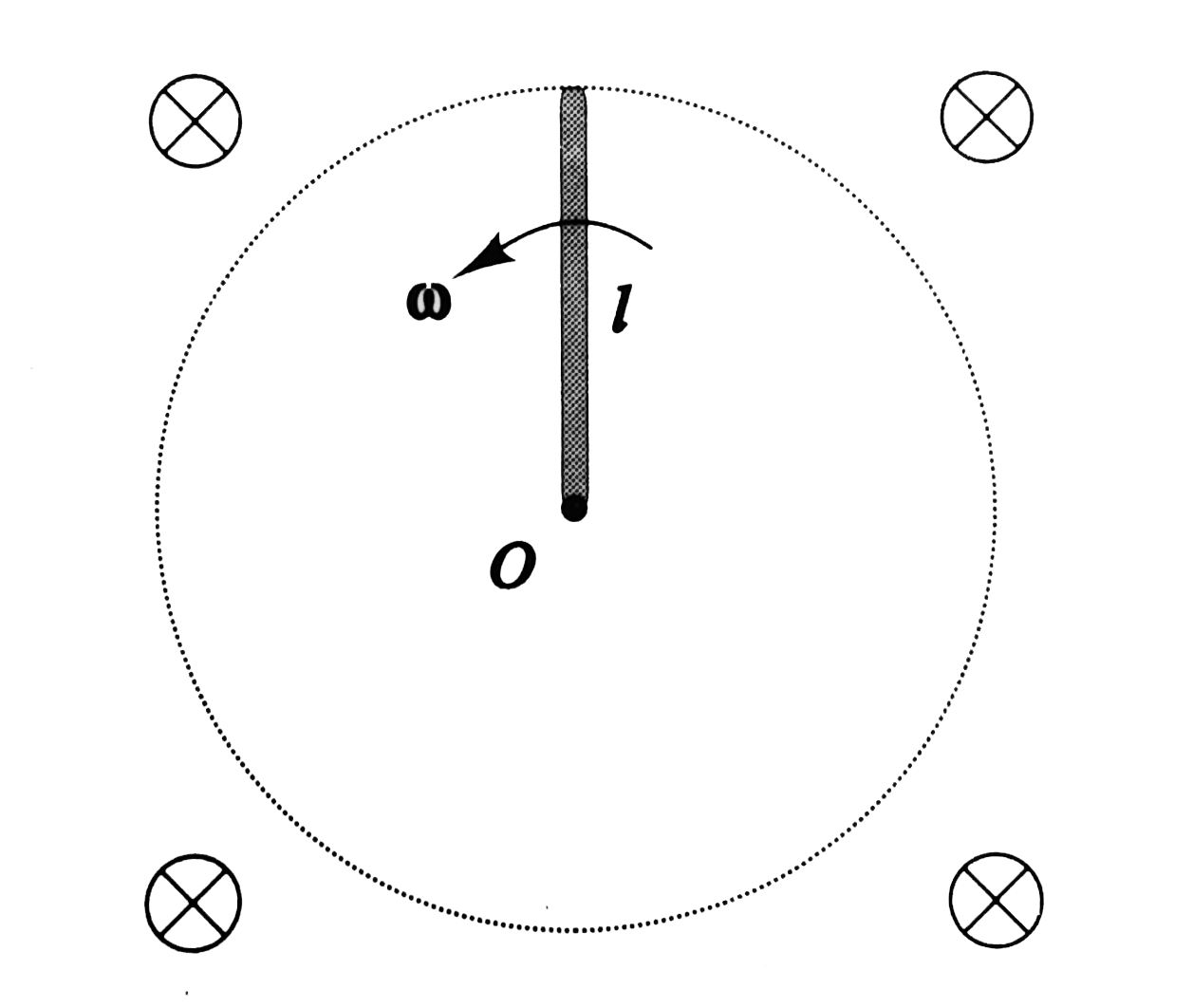A metal rod 1.5m long rotates about its one end in a vertical plane at right angles to the magnetic meridian. If the frequency of rotation is 20revs−1, find the emf induced between the ends of the rod (BH=0.32G).
When the rod rotates in a vertical plane perpendicualr to the megnetic meridian, it will cut the horizontal component of earth's magnetic field so that
e=12BHl2ω=πl2fBH (as ω=2πf)

Subsituting the given data,
=π×(1.5)2×20×0.32×10−4=4.5mV
Topper's Solved these Questions
- ELECTROMAGNETIC INDUCTIONBOOK - CENGAGE PHYSICSCHAPTER - ELECTROMAGNETIC INDUCTIONEXERCISE - Solved Example
5 Videos
- ELECTROMAGNETIC INDUCTIONBOOK - CENGAGE PHYSICSCHAPTER - ELECTROMAGNETIC INDUCTIONEXERCISE - Exercise 3.1
15 Videos
- ELECTROMAGENTIC INDUCTIONBOOK - CENGAGE PHYSICSCHAPTER - ELECTROMAGENTIC INDUCTIONEXERCISE - QUESTION BANK
40 Videos
- ELECTRON,PHONTS,PHOTOELECTRIC EFFECT & X-RAYSBOOK - CENGAGE PHYSICSCHAPTER - ELECTRON,PHONTS,PHOTOELECTRIC EFFECT & X-RAYSEXERCISE - dpp 3.3
15 Videos
Similar Questions
A metal rod 1√π m long rotates about one of its ends in a plane perpendicular to a magnetic field of induction 4×10−3T. If the emf induced between the ends of the rod is 16 mv, then the number of revolutions made by the rod per second is
View Solution(a) A metal rod of length L rotates about an end with a uniform angular velocity ω . A uniform magnetic field B exists in the direction of the axis of rotation. Calculate the emf induced between the ends of the rod. Neglect the centripetal force acting on the free electrons as they move in circular paths.
(b) A rod of length L rotates with a small but uniform angular velocity ω about its perpendicular bisector. A uniform magnetic field B exists parallel to the axis of rotation. Find the potential difference (i) between the centre of rod and one end and (ii) between the two ends of the rod.
View Solution
Knowledge Check
A metal rod of length 1m, rotates about its one end in a plane at right angles to a horizontal magnetic field of induction 722×10−4T. If its frequency of rotation is 10 Hz, then the magnitude of induced e.m.f. Is
A5mVB1mVC0.5VD1VA metal rod of length 1m is rotated about one of its ends in a place at right angle to a uniform magnetic field of induction 5×10−3 T. if it makes 1800 rotations per minute, then the emf iniduced between its ends is
A0.471 VB4.71 VC4.17 VD1.47 VA metal rod 1√π m long rotates about one of its ends in a plane perpendicular to a magnetic field of induction 4×10−3T. If the emf induced between the ends of the rod is 16 mv, then the number of revolutions made by the rod per second is
A3 rpsB4 rpsC5 rpsD6 rps
A metal rod length l rotates about on end with a uniform angular velocity ω. A uniform magnetic field →B exists in the direction of the axis of rotation. Calculate the emf induced between the ends of the rod. Neglect the centripetal force acting on the free electrons as they money in circular paths.
View SolutionA metal rod of length 1m is rotated about one of its ends in a plane at right angles to a uniform magnetic field pf induction 2.5×10−3Wbm−2. If it makes 1800 rpm, then the induced emf between its ends approximately is
View SolutionIf a conductor is rotating about its one end in a uniform magnetic field then an emf induced in it is
View SolutionA metal rod of length 0.5 m rotates at a uniform angular speed about one of its ends in a plane at right angle to a uniform magnetic field of induction 10−5T. If it turns through an angle of 60∘ ini 0.1 s. then the emf induced between its ends will be
View SolutionA 0.5 m metallic rod is being revolved in a vertical plane about one of its ends with an angular velocity of 5 rad/s. The earth’s horizontal magnetic field is 0.2×10−4 T. The emf induced across the ends of the rod will be :
View Solution
